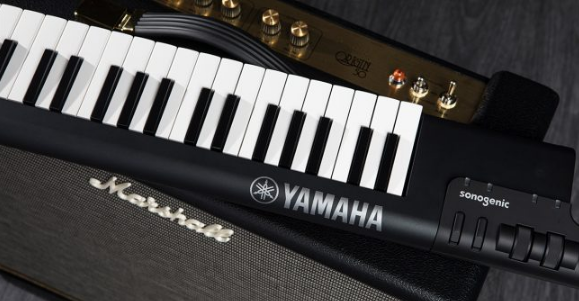Products Category
- FM Transmitter
- 0-50w 50w-1000w 2kw-10kw 10kw+
- TV Transmitter
- 0-50w 50-1kw 2kw-10kw
- FM Antenna
- TV Antenna
- Antenna Accessory
- Cable Connector Power Splitter Dummy Load
- RF Transistor
- Power Supply
- Audio Equipments
- DTV Front End Equipment
- Link System
- STL system Microwave Link system
- FM Radio
- Power Meter
- Other Products
- Special for Coronavirus
Products Tags
Fmuser Sites
- es.fmuser.net
- it.fmuser.net
- fr.fmuser.net
- de.fmuser.net
- af.fmuser.net ->Afrikaans
- sq.fmuser.net ->Albanian
- ar.fmuser.net ->Arabic
- hy.fmuser.net ->Armenian
- az.fmuser.net ->Azerbaijani
- eu.fmuser.net ->Basque
- be.fmuser.net ->Belarusian
- bg.fmuser.net ->Bulgarian
- ca.fmuser.net ->Catalan
- zh-CN.fmuser.net ->Chinese (Simplified)
- zh-TW.fmuser.net ->Chinese (Traditional)
- hr.fmuser.net ->Croatian
- cs.fmuser.net ->Czech
- da.fmuser.net ->Danish
- nl.fmuser.net ->Dutch
- et.fmuser.net ->Estonian
- tl.fmuser.net ->Filipino
- fi.fmuser.net ->Finnish
- fr.fmuser.net ->French
- gl.fmuser.net ->Galician
- ka.fmuser.net ->Georgian
- de.fmuser.net ->German
- el.fmuser.net ->Greek
- ht.fmuser.net ->Haitian Creole
- iw.fmuser.net ->Hebrew
- hi.fmuser.net ->Hindi
- hu.fmuser.net ->Hungarian
- is.fmuser.net ->Icelandic
- id.fmuser.net ->Indonesian
- ga.fmuser.net ->Irish
- it.fmuser.net ->Italian
- ja.fmuser.net ->Japanese
- ko.fmuser.net ->Korean
- lv.fmuser.net ->Latvian
- lt.fmuser.net ->Lithuanian
- mk.fmuser.net ->Macedonian
- ms.fmuser.net ->Malay
- mt.fmuser.net ->Maltese
- no.fmuser.net ->Norwegian
- fa.fmuser.net ->Persian
- pl.fmuser.net ->Polish
- pt.fmuser.net ->Portuguese
- ro.fmuser.net ->Romanian
- ru.fmuser.net ->Russian
- sr.fmuser.net ->Serbian
- sk.fmuser.net ->Slovak
- sl.fmuser.net ->Slovenian
- es.fmuser.net ->Spanish
- sw.fmuser.net ->Swahili
- sv.fmuser.net ->Swedish
- th.fmuser.net ->Thai
- tr.fmuser.net ->Turkish
- uk.fmuser.net ->Ukrainian
- ur.fmuser.net ->Urdu
- vi.fmuser.net ->Vietnamese
- cy.fmuser.net ->Welsh
- yi.fmuser.net ->Yiddish
How to Mimic Feedback for Lead Synths
Date:2020/2/13 22:15:48 Hits:

Actually, you can — and not just with guitar samples but any solo sound. The key element is adding one or preferably two sine waves to add faux feedback. Note that you don’t necessarily need the sine wave(s) to be in the same synthesizer that’s producing the main sound; you can layer a separate synth with only the feedback element, as long as both can be controlled by the same MIDI controller (e.g., loading two synths into a multitimbral instrument and setting them to the same MIDI channel, Studio One’s multi-instrument mode, etc.). Expressiveness matters too, which we’ll discuss later.
Let’s cover the single sine wave scenario first. Create a sine wave that’s at the fundamental and then transpose it 19 semitones up (octave+fifth). The most convincing effect requires separate amplitude envelopes for the primary sound and the feedback. For the feedback sound, create an amplitude envelope that builds up to a peak in about two seconds. The feedback shouldn’t appear immediately; having done a lot of feedback guitar in my time (ahem), feedback doesn’t happen instantly — you have to coax it into happening. Ideally, the feedback envelope will have a delay parameter before the attack or at least the ability to create a concave attack (fig. 1), so you don’t hear the feedback sound initially.
For the main sound, set the envelope so that it stays at a constant level for a while but fades to a somewhat lower sustain level at the 2-second mark. The goal is to have the feedback peak at the same time the main envelope goes into its sustain phase. If you add a second feedback note, then tune it 31 semitones (two octaves+fifth) above the main sound. Have the first feedback note decay over about three to four seconds to a lower sustain level, while the second note fades up during that time (similarly to how the first feedback note faded up while the main sound was falling back to the sustain phase).
It’s important to set the sine wave envelope(s) for a believable attack time — long enough so that the feedback shows up with a long, sustained note, but not so long that the feedback never shows up, and not so short that it shows up too soon. For even more control than is possible with envelopes, use a footpedal to adjust the feedback level or a multidimensional controller, such as the LinnStrument or a ROLI keyboard.
As to modulation, for the most expressive sound, tie all oscillators to the pitch bend wheel, so you can do whammy bar effects, as well as add finger vibrato — a real guitar doesn’t have LFO vibrato. If you prefer LFO vibrato for a more “synthetic” feel, then use the same rate and amount for the main and feedback oscillators, and control the LFO depth with the mod wheel. For the most realistic feedback-guitar-like effect, don’t use too much LFO depth. And here’s a final tip: try running the composite sound through an amp sim!
Prev:Presonus FaderPort
Next:Roland RUBIX44
Leave a message
Message List
Comments Loading...





